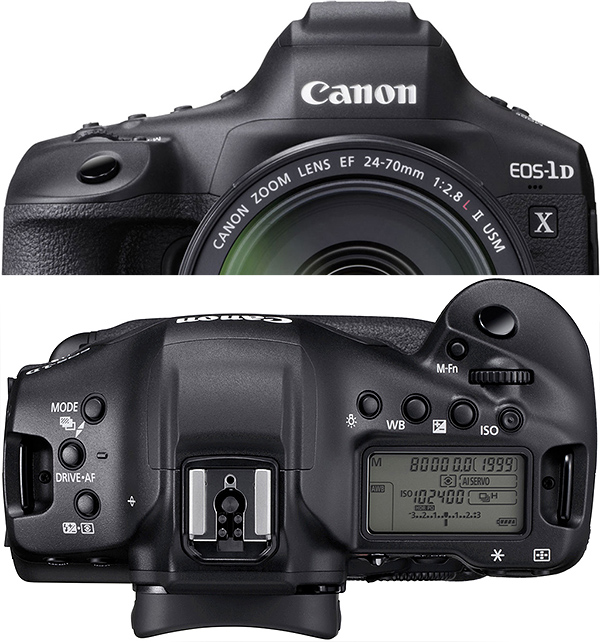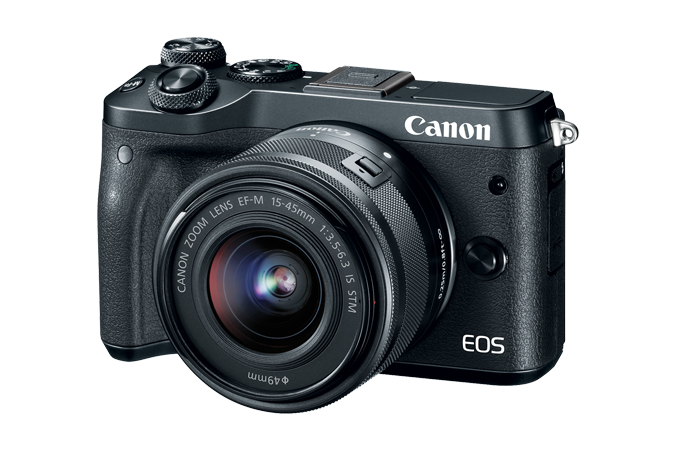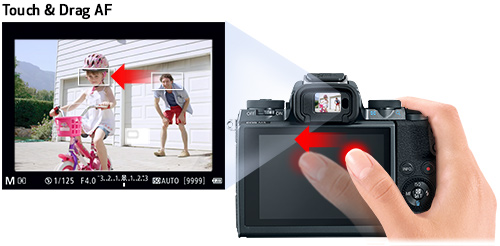Great news, Canon fans! An all-new EOS R-series camera is on the horizon, with Canon announcing the development of the new EOS R3 full-frame camera. The upcoming R3 will be Canon’s fifth full-frame R-series mirrorless camera and will sit above the EOS R5 as Canon’s most high-performance, most high-end R-series camera to date. However, despite its high-tier status among Canon’s camera lineup, the company states that it’s not technically their “flagship” camera. The 1D X Mark III (or the 1D X-series in general) reigns supreme as Canon’s top-tier EOS camera for now. The new EOS R3, therefore, sits between the R5 and the 1D X series, but it will still serve as the top-of-the-line R-series camera.
As this is just a development announcement at this point, full specs and product details have not yet been released, but Canon has unveiled a handful of key details about this upcoming high-end camera.
Canon EOS R3 Key Features & Specs (that we know so far)
- All-new Canon-developed, full-frame stacked BSI CMOS sensor
- Up to 30fps burst shooting with electronic shutter
- Dual Pixel CMOS AF with Deep Learning-based eye- and body-detection AF
- New recognizable subjects with Subject-detection AF
- New EVF with “Eye Control AF” mode
- All-new body design with integrated vertical grip
- EOS-1D-class weather sealing
The most obvious implication of the R3 announcement comes from the product’s name. Canon’s flagship pro sports models have been named as some variant on ‘1’ as far back as the F-1 SLR which debuted in 1971. The EOS-1 came along in 1989, and the first flagship digital model, the EOS-1D, was released in 2001. The fact that the R3 isn’t branded as an ‘R1’ strongly suggests Canon has something planned to sit above it.
Back in the late 1990s Canon had the EOS-3 which sat between its EOS-5 and EOS-1 series models and, just as with the R5 and R6, I doubt this re-use of numbering is coincidental.
|
Canon Eos R3 |
This could mean one of two things: firstly, in terms of price, it may mean that the R3 will sit between the $3,900 price point of the EOS R5 and somewhere in the region of the $6,500 price tag implied by the current range-topping EOS-1DX Mark III. Of course, the hypothetical R1 could also be even more expensive than the existing DSLR flagship, making it the preserve of agency shooters and sideline pros, with the R3 providing a more accessible option non-professionals. Just like the film-era EOS-3 did, back in the 90s and early 2000s.
Either way, the limited specs Canon has given so far: 30 fps shooting with continuous AF, improved AF for sports shooting and a dual grip design all suggest that on spec at least, the R3 may be a more powerful camera than the 1D X Mark III, despite its more lowly numerical title. That, in turn, sets even higher expectations for an R1 level model.
Stacked CMOS
The other factor that boosts our hopes for both cameras is Canon’s adoption of Stacked CMOS technology. We recently wrote that the use of Stacked CMOS is likely to be the key enabling technology underpinning almost every aspect of the performance of Nikon’s promised Z9 pro-level mirrorless camera. There’s every reason to suspect the same will be true for Canon.
Stacked CMOS is likely to be the enabling technology underpinning Nikon and Canon’s promised pro-level mirrorless cameras
Canon says its chip will be a Dual Pixel design, developed in-house. This means we can’t be certain of the approach it will use: in itself the Stacked CMOS approach doesn’t necessarily mean the use of in-sensor RAM, as is the case in Sony Semiconductor designs, but this is an obvious means of supporting the fast sensor readout that Canon is promising.
Interestingly, it means we’ll see Canon jump directly from conventional Front Side Illumination chips to Stacked CMOS, without passing through the intermediate step of making single piece (non-stacked) BSI chips.
Canon has a history of persisting with older manufacturing processes (such as larger component scale) for longer than most of the rest of the industry, squeezing everything possible out of its manufacturing investment before moving on. This is very different to companies that also make smartphone sensors, and regularly have fabrication equipment being passed down as their fine-scale small sensor products move on to the next cutting-edge process.
To Canon’s credit, the low light and readout performance of the EOS R5 sensor is extremely high for an FSI sensor, and it could be that Canon decided that there weren’t sufficient benefits to justify the cost of moving from FSI to BSI in the relatively large pixel sensors it makes. The jump to Stacked CMOS (essentially next-gen BSI) opens up more significant scope for performance improvements though, so it’ll be exciting to see what the R3 and hypothetical future R1 will do with it. This level of ambition would be consistent with the apparent leap forward we saw with Canon’s most recent R models.
Eye input AF
The other attention-grabbing detail in the R3 announcement is that it will have ‘Eye input AF,’ that will select an AF point based on where the photographer is looking. Canon users of a certain age are likely to be reminded of the ‘Eye Controlled Focus’ system from the 1990s that did much the same thing.
Eye Controlled Focus didn’t make the leap across to Canon’s digital cameras and people have speculated whether it could make a comeback ever since. Clearly similar sentiments persisted somewhere within Canon.
It’s been 17 years since the last camera to offer Eye Controlled Focus and AF systems have only become more complex in the interim, with many more selectable points spread over a wider area (the most points the old system ever had to cope with was 45; in the EOS-3, as it happens). But equally, in the meantime, sensing technologies and subject tracking algorithms have become significantly more advanced. As subject-aware AF tracking systems have shown, cameras have become very adept at identifying and tracking small moving subjects with a high degree of precision. This isn’t quite the same challenge, but it’s similar enough, conceptually, to raise our hopes that it’ll be up to the job. That said, subject tracking has become so good, there’s a question mark over how necessary it’ll be, at all.
Wrap-up
 |
| The EOS-1D X Mark III includes a large battery, a substantial image buffer and connections including Ethernet ports that pro sports shooters rely upon. The R3 won’t necessarily do so. |
What the specs make clear is that the R3 is going to be an ambitious camera. Just over a year ago, we said that the 20 fps-in-liveview EOS-1D X III looked like a pretty capable mirrorless sports camera that just happened to still be trapped inside a DSLR body. But the R3, with its promise of 30 fps shooting and improved AF, makes it highly possible that Canon’s second-string camera may well outperform its current flagship. This in itself is an exciting prospect, even before you start to explore the implications for a future R1.
New Stacked BSI CMOS sensor is designed for speed
From a broad overview, the new EOS R3 is designed for professionals and advanced amateurs and, in particular, those needing a durable and high-speed camera with fast burst shooting and sophisticated AF performance for sports, wildlife and other action subjects. As such, the EOS R3 is centered around an all-new, Canon-developed full-frame sensor, designed for high-speed readout performance and minimal rolling shutter distortion when using the electronic shutter. While we don’t yet know the new sensor’s resolution, the new EOS R3 will house Canon’s first stacked full-frame CMOS sensor with a back-illuminated structure.
Additionally, the R3’s stacked sensor design, in a similar vein to the stacked CMOS chips inside the Sony A9-series and the Sony Alpha 1, allows for faster data readout from the sensor, which in turn helps reduce “rolling shutter” distortion during fast electronic shutter-based still-image shooting. Canon claims very minimal rolling shutter distortion during still-image shooting compared to other Canon cameras’ electronic shutters. Furthermore, the R3’s high-speed sensor will provide an electronic shutter with continuous burst shooting rates of up to 30fps with continuous AF and auto-exposure.
High-speed Dual Pixel AF and Eye Control AF technology
Given the focus on speed and performance for sports and wildlife, it comes as no surprise that the Canon EOS R3’s autofocus system will likely be top-notch. Again, we don’t yet know all the details about the camera’s AF system, but Canon does state that it will build on the sophisticated and upgraded Dual Pixel CMOS AF system we saw in the EOS R5 and EOS R6 cameras. The R3’s AF system will also incorporate Deep Learning for its subject-detection system that will track eyes and bodies as well as (we assume) birds and certain types of animals. According to Canon, the R3 will “offer new recognizable subjects for its AF system,” which means we will likely see new types of objects that the camera’s AF system can automatically detect and track.
One very cool new feature that’s making its debut (or “re-debut,” rather) for the first time in a modern EOS digital camera: Eye Control AF. Incorporated into the R3’s EVF, the R3 will let users select the initial AF point or area for AF subject tracking simply by looking at a particular area in the frame. The EVF’s Eye Control AF system will track a user’s eye as they look through the viewfinder and then quickly move the AF point/area to the spot where they are looking. In theory, this should make it much quicker to reposition the AF point in fast-moving scenarios than fiddling with a rear joystick control or directional buttons.
I mentioned “re-debut” as this isn’t the first time a Canon camera has had this type of eye-tracking-based AF control. Several Canon EOS film cameras, starting with the EOS A2E in 1992, included an Eye Control AF feature, offering the same general idea as in the R3: move the focus point to where the user’s eye is looking. Having never used a Canon film camera with Eye Control AF, I can’t comment on how well it worked. However, from this interesting retrospective on the technology from Dale Baskin at DPReview, performance seemed like a bit of a mixed bag depending on which camera you used; the EOS 3 camera with a 45-point AF system appeared to struggle a bit more with picking the precise AF point than the Elan II E did with its modest 3-point AF system.
Canon does state that there are some limitations to the EOS R3’s Eye Control AF. Eye input AF might not be available in specific shooting environments or when wearing certain sunglasses, mirror sunglasses, hard contact lenses or bifocal eyeglasses. (The Canon film cameras’ implementation did allow for some degree of calibration of the Eye Control system to account for eyeglasses or contact lenses, so it’ll be important to see if there’s a similar calibration system with the EOS R3.)
It’s hard to say exactly why we’ve not seen Canon’s Eye Control AF feature translate into the modern, digital era sooner. However, camera technology has evolved dramatically over the years since we last saw Eye Control AF, and we can’t wait to see how it performs in the new EOS R3!
Canon brings gripped design & 1D-class weather-sealing to R-series
As you can see from the product image, the new Canon EOS R3 features a large, one-piece design with an integrated vertical grip, much like Canon’s 1D-series DSLRs. This should make the ergonomics much more balanced and comfortable when shooting with longer, heavier lenses and when shooting in portrait orientation. While we don’t have full product images from all angles, we can see that the R3 also features several customizable front-facing buttons, similar to what is offered on an EOS 1D camera. Further, the vertical grip position offers its own shutter release button and front command dial. It also appears that the R3 doesn’t use a standard PASM mode dial and instead likely offers a similar set of top-deck controls as a Canon 1D-series body — though we can’t yet say for certain without a top view of the camera.
 |
|
Though we can’t say for certain yet, but based on the front product images, it appears the EOS R3 might have a similar set of top-deck controls as the 1D X Mark III.
|
In terms of weather sealing, the EOS R3 is also said to offer the same robust level of dust- and moisture-resistance as Canon’s flagship 1D-class cameras, ensuring durability and reliability in adverse weather conditions and being able to withstand the general wear and tear that a professional photographer may subject their camera.
Lastly, Canon is also debuting a new mobile app called Mobile File Transmitter alongside the EOS R3. While we don’t know if this is an EOS R3-exclusive app (we suspect not), the networking app for iOS and Android devices will allow for both wired* and wireless image file transfers. (*Wired connections require an optional cable.)
Canon R3 sets aim on Sony A1 and Nikon Z9 professional mirrorless cameras
In many ways, the R3 is shaping up to be a direct competitor to several recent and upcoming high-performance mirrorless cameras, most notably the Sony A1 and the upcoming Nikon Z9, in particular. All three of these cameras feature full-frame CMOS sensors that utilize a stacked design for higher performance and fast, low-distortion shooting with electronic shutters. While we don’t yet know the maximum burst shooting specs of the upcoming Nikon Z9, the Sony A1 with its 30fps burst shooting looks to go head-to-head with the upcoming EOS R3 when it comes to sheer burst performance. Meanwhile, the Nikon Z9 also features an integrated vertical grip design, much like their flagship DSLRs. While the trend in the past seemed to focus on mirrorless cameras’ inherent compactness and lightweight form factors, this new breed of pro-class gripped mirrorless cameras — along with the gripped Olympus E-M1X — put a focus on better ergonomics and handling, especially when using longer telephoto lenses.






